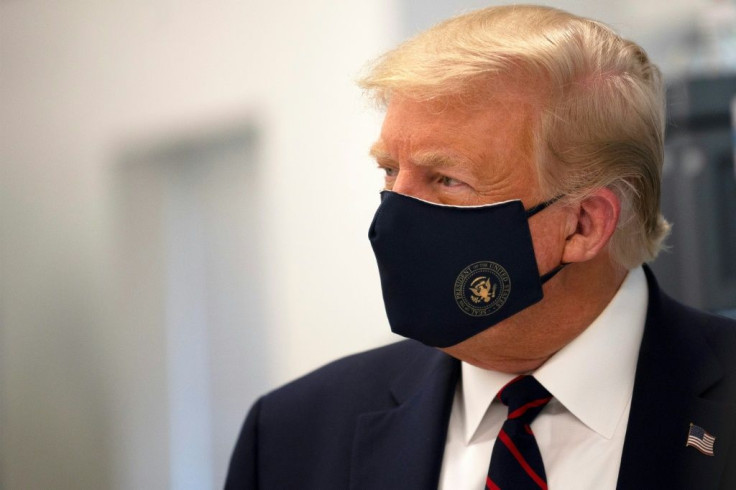President Trump Admits On Tape He Knew How Deadly The Coronavirus Was But Played It Down Anyway

KEY POINTS
- Woodward interviewed Trump 18 times for his forthcoming book, "Rage"
- Trump said he downplayed the severity of the virus to avoid panic
- Latest tracking data shows 190,000 U.S. deaths as result of the pandemic
President Trump knew how deadly the coronavirus was in February but repeatedly downplayed the danger publicly to prevent panic, tapes obtained by media outlets revealed Wednesday.
"I wanted to always play it down," Trump told journalist Bob Woodward in a March 19 interview, just days after he declared a national emergency. "I still like playing it down, because I don't want to create a panic."
The pandemic has claimed 190,000 American lives, Johns Hopkins tracking data showed shortly after noon Wednesday. Critics, including Democratic presidential nominee Joe Biden, have said the death toll could have been reduced if Trump had acted more decisively and consistently when the virus first surfaced.
“He knowingly and willingly lied about the danger it posed to the country," Biden said Wednesday on arrival in Michigan for a campaign appearance.
"He failed to do his job on purpose. ... His failure sent our economy into a tailspin. ... How many families are missing loved ones at their dinner tables tonight because of his failure?” he asked.
At an afternoon news conference, Trump acknowledged his actions, saying "perhaps" he did want to reduce panic.
"The fact is, I'm a cheerleader for this country. I love our country and I don't want people to be frightened. I don't want to create panic," he told reporters, calling Woodward's book "another political hit job."
Woodward interviewed Trump 18 times for his forthcoming book, “Rage,” which is scheduled for publication next week.
“You just breathe the air and that’s how it’s passed,” Trump told Woodward in a Feb. 7 call. “And so that’s a very tricky one. That’s a very delicate one. It’s also more deadly than even your strenuous flu.”
“This is deadly stuff,” the president repeated for emphasis while saying publicly coronavirus was no worse than the flu.
Trump used influenza fatality statistics to minimize the number of deaths attributed to COVID-19 and kept insisting it would “disappear” with the advent of warmer weather despite the fact that warm-weather countries were grappling with the contagion as well. He also called the coronavirus “pretty amazing.”
Woodward quotes national security adviser Robert O’Brien as telling Trump on Jan. 28 the virus could present “the biggest national security threat you face in your presidency. This is going to be the roughest thing you face.”
Woodward’s book quotes Dr. Anthony Fauci, the nation’s top infectious disease expert, as calling Trump’s leadership rudderless and faulted the president’s short attention span. Fauci often was put in the position of contradicting Trump during White House news briefings on the virus, and at one point, the White House tried to undercut Fauci’s approach to the pandemic, pointing out some of his early assessments were wrong without tying them to the amount of information that was available at the time.
The administration also pressured the Centers for Disease Control and Prevention to ease school reopening requirements and other guidelines.
In a recent Axios interview, Trump appeared to shrug off the death toll, saying, “It is what it is,”and he has consistently flouted masking and social distancing guidelines at the White House and his rallies.
The result has been widespread public distrust of the president with experts worried his effort to speed development of a vaccine could undermine public confidence and keep people from seeking inoculation.
Trump on Monday again said a vaccine could be available as early as October. Pharmaceutical firms pushed back, saying they would adhere to best practices and not rush an ineffective vaccine to market. AstraZeneca Tuesday announced it was suspending its phase 3 trial to give it time to assess an “adverse event” involving one of its test subjects.
Updated at 5:30 p.m. EDT
© Copyright IBTimes 2025. All rights reserved.






















